| |
Watch out for that levitating bridge in downtown Duluth
By Tom Adkinson
June 25, 2021
(Editor’s note: This is one in a series of travel stories spotlighting destinations and activities to consider in a time of coronavirus and to inspire safe outings elsewhere.)
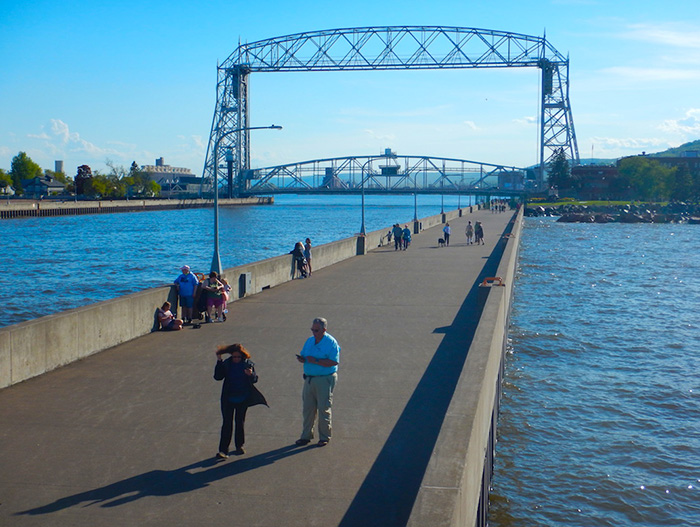
Walkers stroll along the canal that leads to the Duluth Aerial Lift Bridge and safe harbor anchorage. Image by Tom Adkinson. |
DULUTH, Minnesota – Beware on Lake Avenue in downtown Duluth. It’s possible for a portion of the street to levitate right in front of you.
Mind you, it won’t happen terribly quickly or without warning, but it’s still strange to see approximately a block of roadway rise 120 feet into the air.
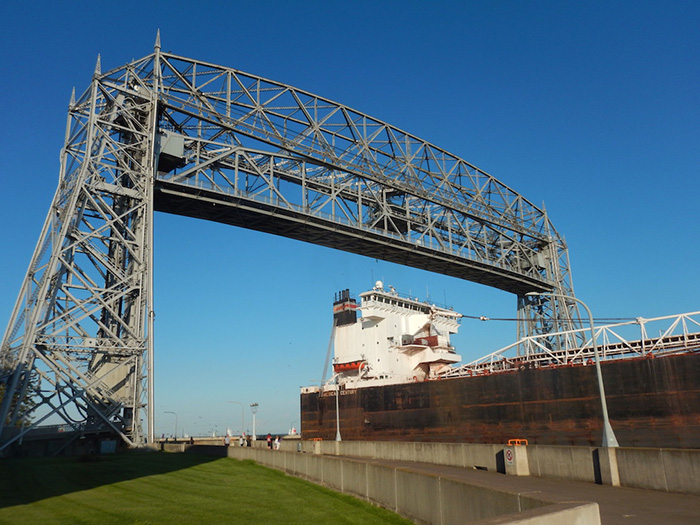
Lake Avenue rests comfortably above a Great Lakes freighter as it passes under the aerial bridge. Image by Tom Adkinson. |
What you’re seeing is the operation of the Duluth Aerial Lift Bridge, an engineering marvel and Duluth’s most famous landmark. Raising this portion of Lake Avenue, of course, has a purpose. It’s to allow massive ships to exit Lake Superior and enter Duluth’s harbor.
For landlubbers, it’s quite the spectacle. The bridge operator and the captain of a ship up to 1,000 feet long have been timing a ballet of sorts. The ship enters a channel with little room to spare, glides under the bridge and emerges into the harbor.

Sailboats skitter about on Lake Superior near the entrance to the ship canal while freighters wait nearby. Image by Tom Adkinson. |
During the performance, the captain blasts a greeting on the ship’s horn – a long and two shorts. The bridge operator replies with the same pattern. Spectators take pictures and wave to the ship.
The process repeats itself upwards of 5,000 times during the Great Lakes shipping season that runs from March to January. The bridge opens the route for fishing boats, tour boats and other craft, too. In between lifts, cars roll down Lake Avenue, and pedestrians stroll across the bridge.
The bridge weighs 1,000 tons, and cement counterweights slide up and down towers on either side of the roadbed. It looks like the product of a giant Erector Set.
“Everything on this thing is big, and everything on it’s heavy,” bridge operator Dave Campbell told Minnesota Public Radio in 2016, “but I tell people it’s nothing but a glorified elevator.”
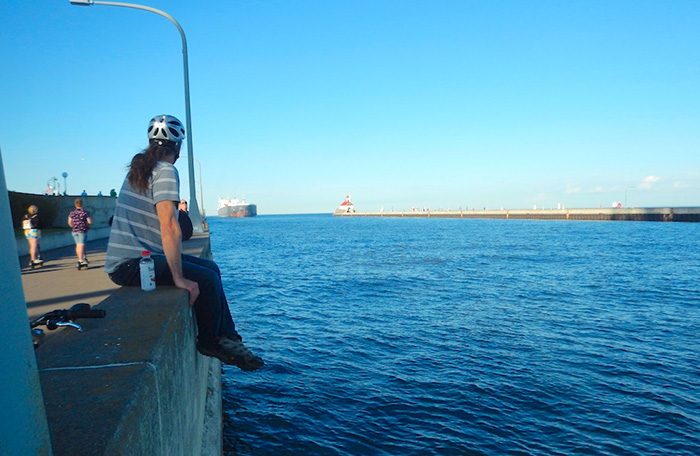
Times for ships’ transits under the aerial bridge are posted so spectators know when to watch. Image by Tom Adkinson. |
The first version of the bridge was built between 1901 and 1905. Instead of featuring a roadbed, it had a gondola on which vehicle and pedestrians would ride from one side to the other, mimicking a bridge in Portugal.
The roadway was installed in 1929, and the entire bridge has been rehabilitated four times since then – a fact that is reassuring as America continues to sputter on its national need to maintain vital infrastructure.
The downtown side of the bridge is in Canal Park, a multi-block district of hotels, restaurants, shops and attractions. It is a major magnet for local residents and visitors alike. There is a promenade up both sides of the ship canal that provides expansive views of Lake Superior and any ships waiting to go under the bridge.
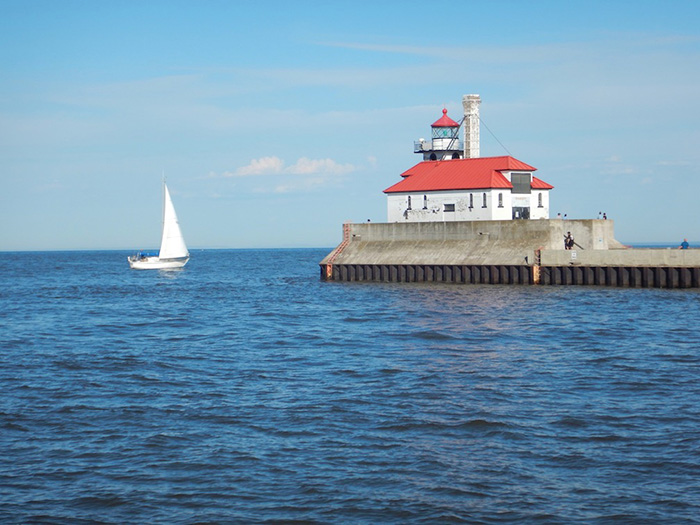
A red roof, blue water and a white sail create a pretty scene near the aerial bridge. Image by Tom Adkinson. |
Transit times for ships are posted online, and they also are available at the Lake Superior Maritime Visitor Center, a U.S. Army Corps of Engineers facility.
The freighters you will see are of two types. Most are “Lakers,” bulk carriers of commodities such as iron ore, coal and grain. Most are black or red. They are built specifically for service on the Great Lakes and cannot reach saltwater because they are too big for the St. Lawrence Seaway.
If you see a more colorful vessel (often green, blue and red), it is likely an oceangoing “Salty.” The biggest “Salty” is 740 feet long.
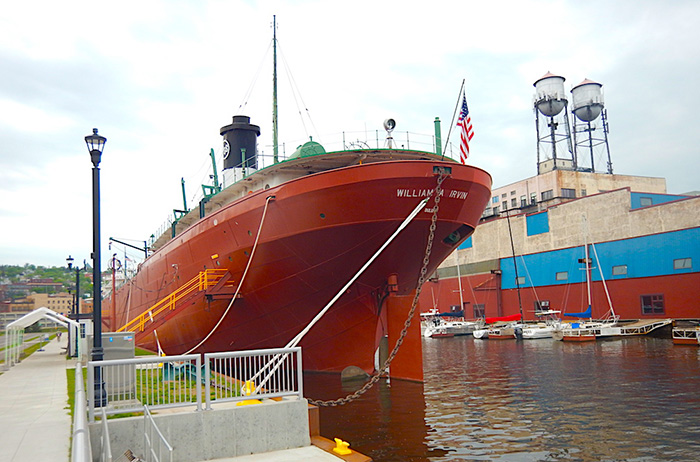
The William A. Irvin, once the flagship of U.S. Steel’s inland fleet, now is a museum. Image by Tom Adkinson. |
To fully grasp the size of a Great Lakes freighter, walk a couple of blocks to visit the William A. Irvin Museum. Don’t look for a bricks and mortar museum because the William A. Irvin is a Great Lakes freighter that once was the flagship of U.S. Steel’s fleet.
All of its statistics are impressive, but perhaps the most notable are cost figures. The ship cost $1.3 million to build in Depression-era 1937. It was taken out of service in 1978 and bought six years later for its new life. The price tag then? All of $110,000.
|

